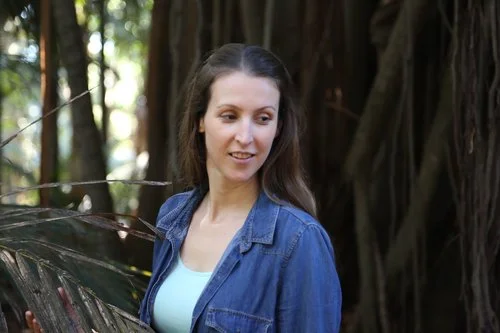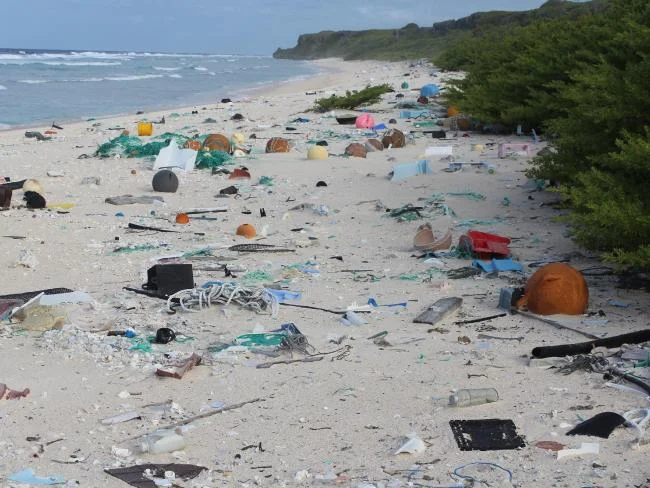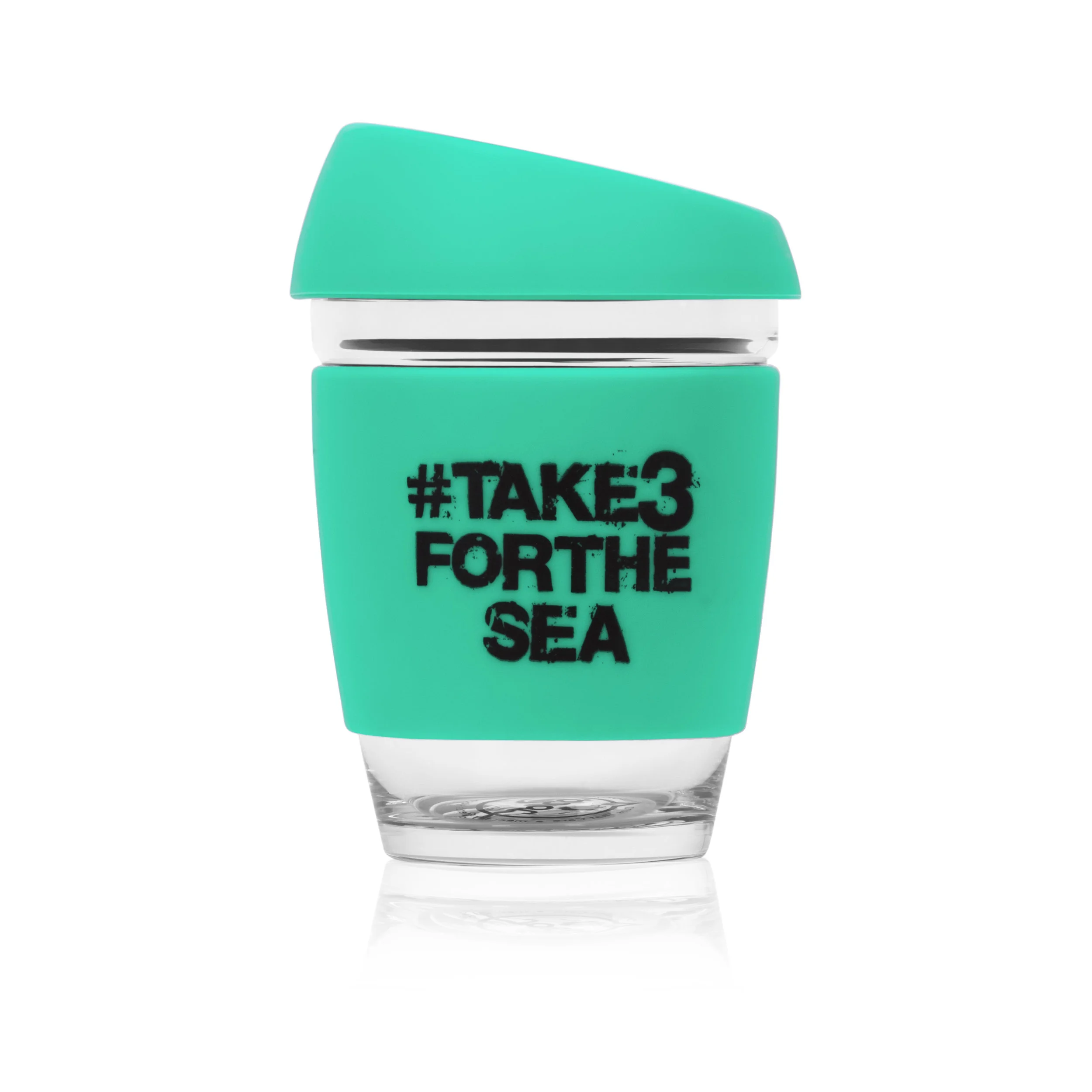Jennifer in a still from the film, Blue
If you've listened to this Episode on iTunes already, welcome to the SHOW NOTES. If you haven't heard it yet, scroll down to LISTEN HERE:
EPISODE 3 FEATURES JENNIFER LAVERS
Dr. Jennifer Lavers is film star and a WOMAN IN SCIENCE (we need more of them), with an ocean obsession - even though she didn't clap eyes on the sea until she was 21 years old. FACT!
She sees seabirds as sentinels of marine health. Are we listening to what they’re telling us? Her work attached to the University of Tasmania's Institute for Marine and Antarctic Studies, focuses on birdlife, but recently she's been looking to ART and FASHION to help get the message out too.
Jennifer appears in the new film Blue about the state of our seas. And she’s working with her friend Marina De Bris, who shows her ‘trashion’ concept (fashion garments made entirely from ocean plastic rubbish) on the runway.
In this Episode, Jennifer tells the story of her research on remote HENDERSON ISLAND in the South Pacific and its debris-littered beaches. What happens to plastic when it enters our waters? What’s the deal with bioaccumulation? What are MICRO-PLASTICS & why are they linked to the fashion industry? How can we turn the story of ocean plastic around?
LINKS
Plastic Free July aims to raise awareness of the problems with single-use disposable plastic and challenges people to do something about it. TAKE THE PLEDGE
"IF ALL WE DO IT CLEAN UP, THAT IS ALL WE'LL EVER DO." - HEIDI TAYLOR, TANGAROA BLUE
A diet of bottle caps and broken toothbrushes is not nutritious for this little fellow
Help Jennifer Save our Seabirds
Take 3 for the Sea NEEDS YOUR HELP. Support the movement.
I promised you we'd share the footage we discuss in the podcast of exactly what it looks like when Jennifer's beloved Flesh-footed Shearwaters ingest plastic instead of food, so here it is. It's not pretty, I'm afraid. And yet. I really think we should all see it. It certainly made me think more about how I can reduce my own plastic use.
HENDERSON ISLAND - WHAT'S THE STORY?
Three-thousand kilometres away from the nearest city, half way between South Africa and New Zealand, how did Henderson Island wake up like this? It's uninhabited beaches are now a plastic junkyard. It's littered with an estimated 37.7 million pieces of plastic. SAY WHAT?!
Jennifer spent three months out there on a research trip with Dr Alexander Bond from the Centre for Conservation Science in the UK. Their findings are shocking.
“What’s happened on Henderson Island shows there’s no escaping plastic pollution even in the most distant parts of our oceans,” says Jennifer. "Far from being the pristine ‘deserted island’ that people might imagine of such a remote place, Henderson Island is a shocking but typical example of how plastic debris is affecting the environment on a global scale."
What exactly did the researchers discover? Who's litter is this? What does it look like?
Alas the answer is hearth-breakingly mundane. It looks like STUFF WE USE AND SEE EVER SINGLE DAY. Piles of plastic debris in various states of breaking up (it NEVER breaks down, as Jennifer points out in the podcast). Fishing nets, bottle tops, toothbrushes, sunglasses, old shoes, bottles, cups, straws... and a hermit crab making his home not in a borrowed shell but inside a Avon cosmetics jar.
"Based on our sampling at five sites we estimated that more than 17 tonnes of plastic debris has been deposited on the island, with more than 3,570 new pieces of litter washing up each day on one beach alone," they concluded. The only solution is to turn off the tap...
"WHERE IS THIS MAGICAL MYSTICAL PLACE WE CALL 'AWAY'? ... SO OFTEN IT'S REMOTE OFFSHORE ISLANS, THE DEPTHS OF THE SEA, FAR-FLUNG CORNERS OF THE EARTH." - JENNIFER LAVERS
But wait... there's plastic in our clothing too:
SHOP RIGHT: 3 SIMPLE WAYS TO SWITCH THE PLASTIC OUT OF YOUR LIFE
Order your bamboo toothbrushes from Nourished Life
Spread the word while drinking your coffee the right way with this stylish little number
Protect Mother Earth, and look very fashion while you're at it - with this matt black stainless steel water bottle from Earth Bottles
THANK YOU FOR JOINING THE WARDROBE CRISIS CONVERSATION. WE'LL HAVE A NEW EPISODE FOR YOU EVERY WEDNESDAY. CAN YOU HELP US SPREAD THE WORD? WE'D LOVE YOU TO TELL YOUR FRIENDS & LEAVE A REVIEW IN iTUNES.
Until next time,
Clare x









